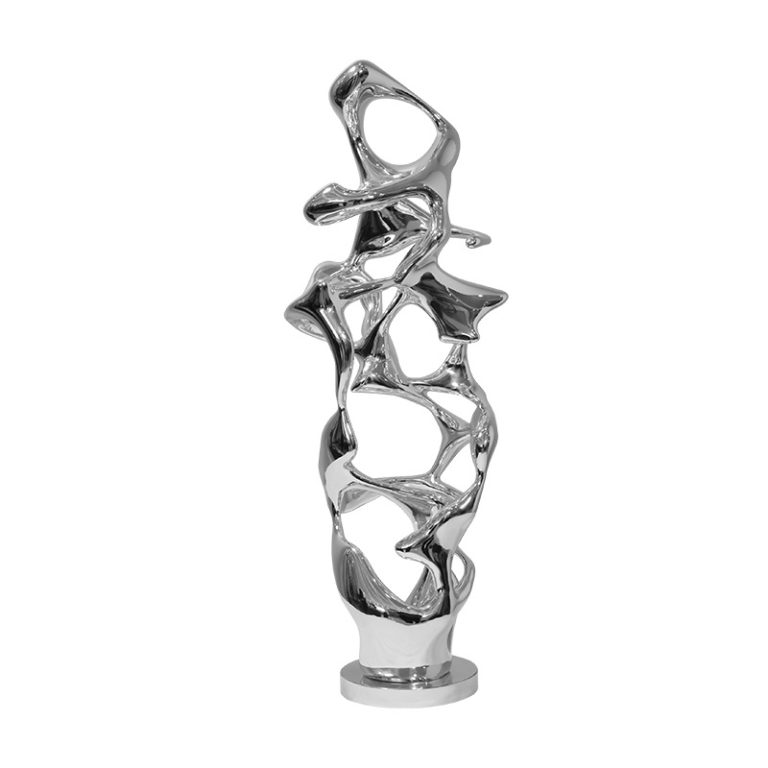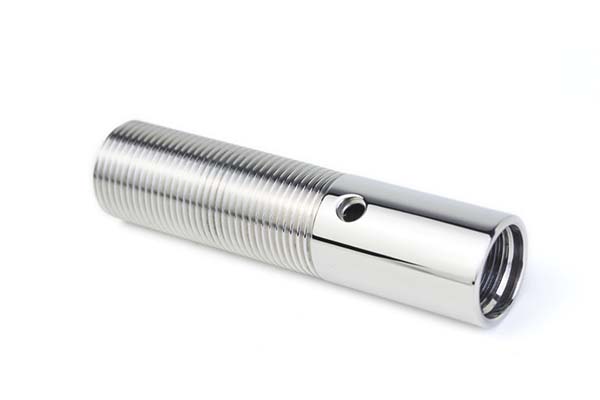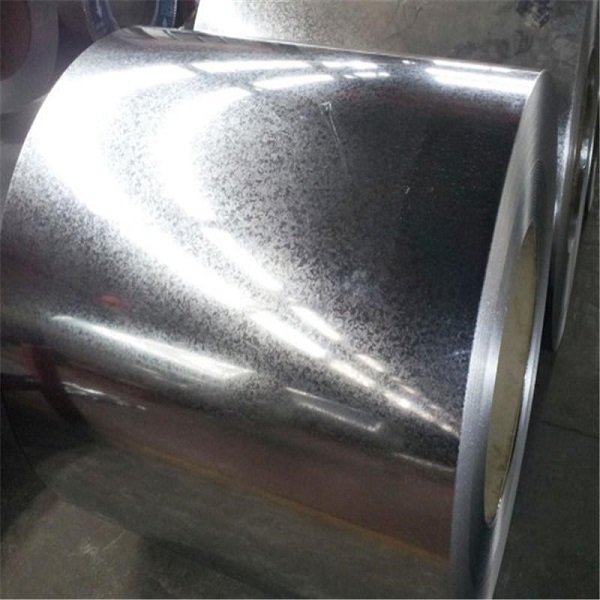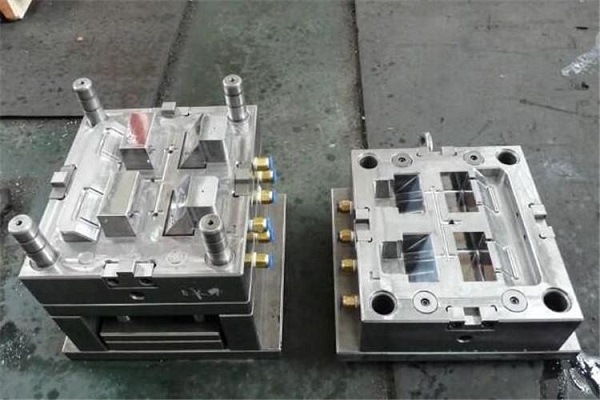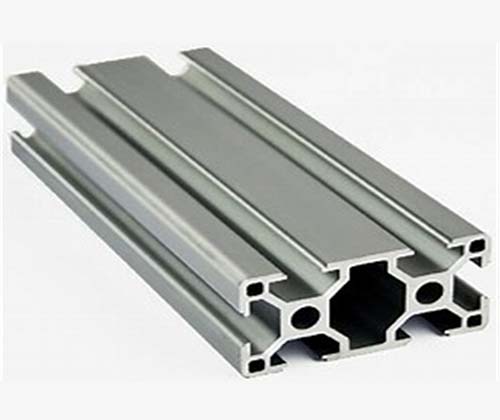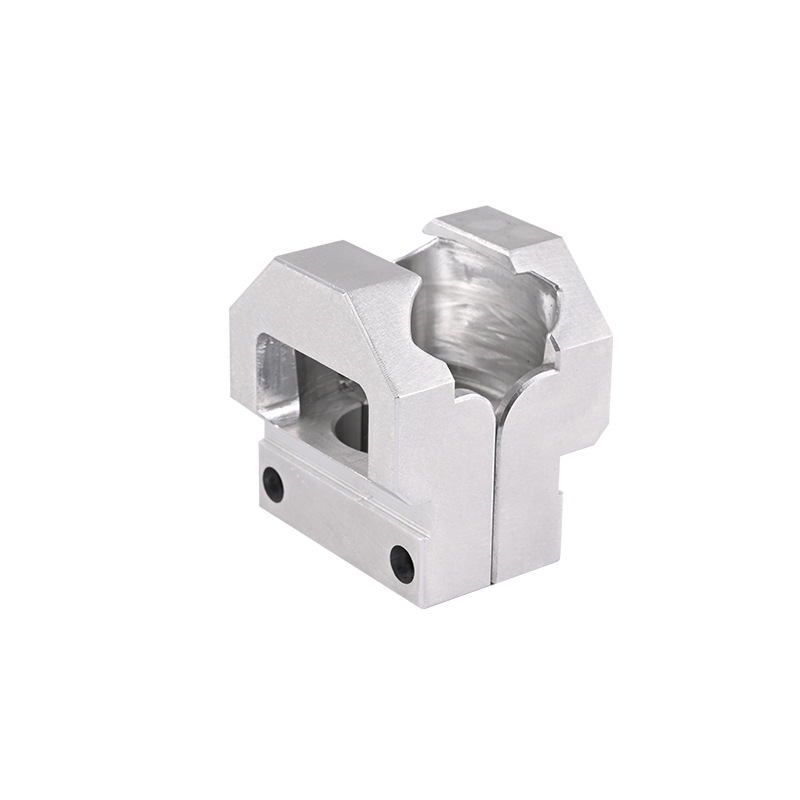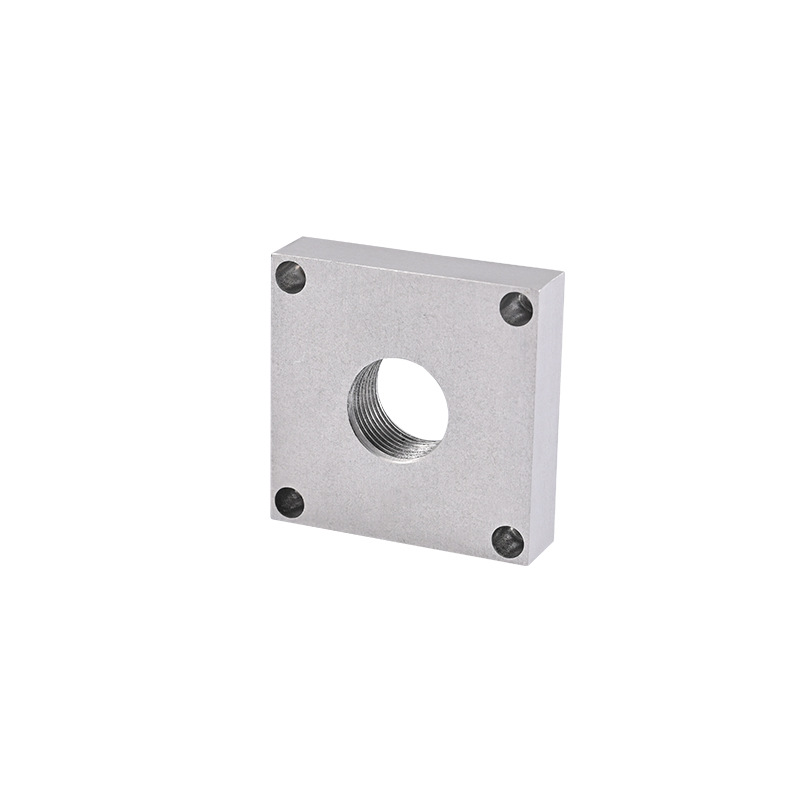Introduction
What are Springs?
Springs are mechanical components that are designed to store mechanical energy when a force is applied to them, and then release that energy when the force is removed. They are made from a variety of materials, such as steel, stainless steel, copper, and plastics, depending on their intended applications. Springs are widely used in various mechanical systems, from small consumer products like pens and toys to large industrial equipment such as engines and heavy machinery. They can be found in everyday items like mattresses, car suspensions, and garage doors, as well as in more complex systems like aircraft landing gear and medical devices.
Importance of Understanding Spring Types and Applications
Understanding the different types of springs and their applications is crucial for several reasons. In engineering design, choosing the right type of spring is essential to ensure the proper functioning and performance of a mechanical system. Yigu Technology For example, in a car suspension system, the correct choice of springs can greatly affect the vehicle's ride comfort, handling, and safety. Using the wrong type of spring could lead to excessive vibrations, poor handling, or even component failure.
In product manufacturing, knowledge of spring types helps in optimizing the design and reducing production costs. Selecting the most suitable spring for a particular application can lead to a more efficient use of materials and manufacturing processes. It can also improve the durability and reliability of the product, reducing the need for frequent maintenance or replacement.
Moreover, in research and development, understanding spring behavior allows engineers to innovate and develop new products or improve existing ones. By studying the properties of different springs, they can design more advanced and efficient mechanical systems, such as more energy - efficient engines or more precise medical instruments.
Types of Springs
Compression Springs
Design and Working Principle
Compression springs are designed to store and release energy when subjected to a compressive load. They are typically made of coiled wire, with the coils evenly spaced along the length of the spring. The basic structure consists of a helical shape, and when a force is applied axially to compress the spring, the coils are pushed closer together.
The working principle of compression springs is closely related to Hooke's Law. According to Hooke's Law, for a linear spring, the force \(F\) required to compress the spring by a distance \(x\) is given by the formula \(F = -kx\), where \(k\) is the spring constant or spring rate. The negative sign indicates that the restoring force exerted by the spring is in the opposite direction of the applied force. As the spring is compressed, it stores elastic potential energy, and when the external force is removed, the spring returns to its original length, releasing the stored energy.
Common Applications
- Automotive Shock Absorbers: In cars, trucks, and motorcycles, compression springs are a crucial part of the suspension system. They help to absorb the shocks and vibrations caused by uneven road surfaces. Yigu Technology For example, when a vehicle drives over a pothole, the compression springs compress, storing the energy from the impact. Then, as the wheel moves back to its normal position, the springs release the energy, providing a smoother ride. According to industry data, over 90% of modern vehicles use compression springs in their suspension systems.
- Spring Mattresses: Compression springs are used in traditional innerspring mattresses. They provide support to the body, distributing the weight evenly. Different types of compression springs, such as Bonnell springs, pocket springs, and continuous coil springs, are used depending on the desired level of comfort and support. A standard double - sized mattress may contain hundreds of compression springs.
- Mechanical Pencils: Compression springs in mechanical pencils are used to retract and extend the lead. When the button on the pencil is pressed, the spring compresses, allowing the lead to be advanced. Once the pressure is released, the spring returns to its original state, holding the lead in place. This mechanism ensures smooth and precise lead operation.
Extension Springs
Design and Working Principle
Extension springs are designed to operate under a tensile load. They are also made of coiled wire, but unlike compression springs, the coils are initially tightly wound together. When a force is applied to pull the ends of the extension spring apart, the coils are stretched, and the spring resists this elongation.
Similar to compression springs, extension springs also follow Hooke's Law in the context of tensile forces. The force \(F\) required to stretch the spring by a length \(x\) is proportional to the elongation, with the relationship \(F = kx\) (where \(k\) is the spring constant). The spring stores energy as it is stretched, and when the applied force is removed, it contracts back to its original length, releasing the stored energy.
Common Applications
- Luggage Scales: In luggage scales, extension springs are used to measure the weight of the luggage. When the luggage is hung on the scale, the force due to the weight of the luggage stretches the extension spring. The amount of stretch is proportional to the weight, and this is translated into a weight reading on the scale. For instance, a high - quality luggage scale can accurately measure weights up to 50 kg using an extension spring - based mechanism.
- Garage Door Mechanisms: Extension springs are used in many garage door systems to assist in lifting and lowering the door. They are typically mounted on either side of the door. When the door is opened, the extension springs are stretched, storing energy. This stored energy helps to counterbalance the weight of the door, making it easier to open and close. In fact, a standard single - car garage door may use two extension springs, each capable of handling a significant portion of the door's weight.
- Slinky Toys: The classic Slinky toy is an example of an extension spring. When held at one end and allowed to fall, the Slinky stretches and contracts in a unique, wave - like motion. As it moves down stairs or slopes, the extension spring's ability to store and release energy creates the characteristic movement that has made the Slinky a popular toy for decades.
Torsion Springs
Design and Working Principle
Torsion springs are designed to store and release energy when subjected to a torque or twisting force. They are usually made of a coiled wire, with the ends of the spring forming arms or hooks. When a torque is applied to rotate one of the arms relative to the other, the spring resists the rotation and stores elastic potential energy.
Torsion springs follow an analogous version of Hooke's Law. The torque \(T\) required to twist the spring through an angle \(\theta\) is given by \(T = k\theta\), where \(k\) is the torsional spring constant. The spring's coils either wind up or unwind depending on the direction of the applied torque, and when the torque is removed, the spring returns to its original position, releasing the stored energy.
Common Applications
- Clothespins: Torsion springs are used in clothespins to provide the clamping force. When the two halves of the clothespin are opened, the torsion spring is twisted, storing energy. When released, the spring returns to its original state, closing the clothespin and gripping the clothes firmly. A standard plastic clothespin may use a small, lightweight torsion spring to achieve this function.
- Mouse Traps: In traditional mouse traps, a torsion spring is the key component that provides the snapping force. When the trap is set, the torsion spring is wound up, storing potential energy. When the trigger is activated by a mouse, the spring releases the stored energy, quickly snapping the bar down and trapping the mouse. These springs are designed to provide a high - speed and high - force response.
- Automotive Engine Valve Control: Torsion springs are used in engine valve systems to control the opening and closing of the valves. They ensure that the valves return to their closed position after being opened by the camshaft. This precise control is essential for the proper combustion process in the engine. In a four - cylinder engine, for Yigu Technology example, there may be eight valves, each controlled by a torsion spring.
Constant Force Springs
Design and Working Principle
Constant force springs have a unique design, being made from pre - tensioned metal strips instead of wire like most other springs. They are typically coiled into a spiral shape. The key characteristic of a constant force spring is that it provides nearly the same force regardless of how much it is extended.
The working principle behind this is based on the way the pre - tensioned metal strip is formed. When the spring is extended, the strip unwinds from the coil. The internal stress distribution within the metal strip is carefully engineered so that the force required to extend the spring remains relatively constant. However, it's important to note that initially, the spring's full load must be overcome by extending it to 125% of its original diameter. After this point, a nearly constant force can be maintained during further expansion.
Common Applications
- Monitor Height Adjustment: In adjustable computer monitors, constant force springs are used to provide a smooth and consistent force for height adjustment. They allow the monitor to be easily moved up and down and held in place at the desired height. This ensures that users can comfortably position the monitor for optimal viewing. For Yigu Technology example, in a popular office monitor model, the constant force spring system enables seamless height adjustment over a range of 15 - 20 cm.
- Clocks: Constant force springs, also known as clock springs, are used in mechanical clocks to provide a consistent source of power. As the spring unwinds, it delivers a nearly constant torque, which drives the clock's movement mechanism. This ensures that the clock runs at a consistent speed, keeping accurate time. Antique mechanical clocks often feature high - quality constant force springs.
- Automatic Rewinders: In applications such as window blinds, seatbelt retractors, and some types of electrical cord reels, constant force springs are used as automatic rewind mechanisms. They store energy when the blind is extended, the seatbelt is pulled out, or the cord is unwound. Then, when the external force is removed, the spring returns the component to its original position, providing a convenient and efficient rewind function. A typical car seatbelt retractor uses a constant force spring to ensure smooth and quick retraction of the seatbelt.
Spring Classification by Load - Displacement Relationship
Linear (Constant Rate) Springs
Explanation of Hooke's Law
Linear springs, also known as constant rate springs, follow Hooke's Law. Hooke's Law is expressed as \(F = -kx\) for linear springs in the context of compression or extension. Here, \(x\) represents the distance by which the spring is extended or compressed, which can be calculated as \(x = L2 - L1\), where \(L1\) is the initial length and \(L2\) is the final length of the spring. \(F\) is the force required to cause this extension or compression. The spring constant \(k\), also known as the spring rate, is a measure of the spring's stiffness. A higher value of \(k\) means the spring is stiffer and requires more force to be deformed.
The negative sign in the formula \(F = -kx\) indicates that the restoring force exerted by the spring is in the opposite direction of the applied force. For example, if a force is applied to stretch a spring downwards, the spring will experience a downward extension. However, the spring's restoring force will act in the upward direction, trying to bring the spring back to its original length.
Torsion springs, which are a type of linear spring in terms of torque - angle relationship, follow an analogous version of Hooke's Law: \(T = k\theta\), where \(T\) is the torque, \(k\) is the torsional spring constant, and \(\theta\) is the angle of deflection or twist. In both cases of linear and torsional linear springs, the spring rate \(k\) remains constant regardless of the spring's deflection, as long as the elastic limit of the spring is not exceeded.
Examples and Applications
- Spring Scales: In a simple spring scale, a linear spring is used to measure the weight of an object. When an object is placed on the scale, the force due to the object's weight stretches the spring. According to Hooke's Law, the extension of the spring is proportional to the force (weight of the object). For instance, a common kitchen spring scale with a spring constant of \(k = 50\ N/m\) will extend by \(x = 0.02\ m\) when a \(1\ N\) weight is applied (\(F = kx\), so \(1\ N=50\ N/m\times x\), solving for \(x\) gives \(x = 0.02\ m\)).
- Shock Absorber Components: In some shock absorber systems, linear springs are used to provide a basic level of shock absorption. For example, in a small - scale industrial machine, a linear compression spring might be used to absorb minor vibrations. The spring's constant rate ensures that the force exerted by the spring changes linearly with the displacement, providing a consistent level of damping for small - amplitude vibrations.
Variable Rate Springs
Types and Characteristics
Variable rate springs have a unique characteristic in that their spring rate (\(k\)) is not constant throughout their axial length. There are two main types: progressive and abrupt - change variable rate springs.
Progressive variable rate springs have a spring rate that gradually increases as the spring is compressed or extended. This means that as the displacement of the spring increases, the force required to further displace the spring also increases at an increasing rate. For example, if we consider a graph of force (\(F\)) versus displacement (\(x\)), the slope of the line (which represents the spring rate \(k\)) will get steeper as \(x\) increases.
Abrupt - change variable rate springs, on the other hand, have a more sudden change in their spring rate. This could occur when a certain part of the spring comes into contact with another component or when a mechanical mechanism within the spring is activated. For instance, in some complex mechanical systems, a spring might have a lower spring rate for small displacements, and then suddenly switch to a much higher spring rate when a specific displacement threshold is reached.
Applications and Advantages
- Battery Boxes: Cone - shaped compression springs, which are a type of variable rate spring, are commonly used in battery boxes. These springs can be compressed to a very low height, with the fully compressed height being as low as one wire diameter. This allows for efficient use of space in the battery box. The variable rate nature of these springs also provides additional benefits. For example, they are laterally stable, which means they are less likely to buckle under load. In a battery box, where the springs need to support the weight of the batteries over time, this stability is crucial.
- High - End Car Suspension Systems: Some high - end cars use variable rate springs in their suspension systems. The progressive spring rate allows the suspension to handle different driving conditions more effectively. When the car is driving on a smooth road, the spring can provide a soft and comfortable ride with a relatively low spring rate. But when the car hits a large pothole or goes over a speed bump, the increasing spring rate provides more resistance, preventing the suspension from bottoming out and improving the vehicle's handling and safety. Research has shown that cars with variable rate spring suspensions can reduce the impact force on the vehicle's body by up to 30% compared to those with linear spring suspensions in certain rough - road conditions.
Constant Force Springs (Revisited in this Context)
How They Differ in the Load - Displacement Aspect
Constant force springs are distinct in the load - displacement relationship compared to linear and variable rate springs. While linear springs have a force that is directly proportional to the displacement (up to the elastic limit), and variable rate springs have a non - constant relationship where the force changes non - linearly with displacement, constant force springs provide nearly the same force regardless of the displacement (after an initial pre - load condition).
As mentioned earlier, although they are called constant force springs, an initial pre - load is required. The spring's full load must be overcome by extending the spring to 125% of its original diameter. After this point, a nearly constant force can be maintained during further expansion. This behavior is in contrast to linear springs, where the force constantly changes with displacement, and variable rate springs, where the force - displacement relationship is variable in a non - constant - force manner.
Specific Applications Highlighting this Property
- Roll - up Door Balancing Systems: In roll - up doors, constant force springs are used to balance the weight of the door. As the door is rolled up or down, the constant force spring provides a consistent counter - force. This ensures that the door can be easily opened and closed with a relatively constant amount of effort. For example, in a commercial roll - up door that weighs \(200\ kg\), a constant force spring can be adjusted to provide a nearly constant counter - force of around \(1800\ N\) (taking into account factors like friction and the door's movement dynamics), making it possible for a single person to operate the door smoothly.
Spring Manufacturing Methods
Coil Springs
Lightweight Coil Springs
Lightweight coil springs are typically manufactured using a precise process that starts with the selection of appropriate metal wires. These wires are then formed on a Computer Numerical Control (CNC) coiling machine. The multi - axis CNC control offers remarkable flexibility, allowing for the creation of variable pitches and a wide variety of end conditions. For example, the pitch, which is the distance between adjacent coils, can be adjusted to achieve different spring characteristics. The end conditions can be designed to be open - ended, closed - ended, squared, or even have special hooks or loops, depending on the specific application requirements.
Once the metal wires are formed into the desired coil shape on the CNC coiling machine, the springs do not initially possess the springy properties that are required for their functional use. To develop these properties, the springs need to undergo a heat - treatment process. They are heated to a high temperature, typically around 500 degrees Fahrenheit or more. This high - temperature heating helps to relieve the internal stresses that have been induced during the coiling process. After being heated for a specific period, the springs are quenched, which involves rapidly cooling them. This quenching step is crucial as it creates the shape memory in the springs, enabling them to return to their original coiled shape when a force is applied and then removed, thus providing the necessary elastic behavior.
Heavy - Duty Coil Springs
The manufacturing process for heavy - duty coil springs differs significantly from that of lightweight coil springs, mainly due to the different requirements in terms of strength and size. For heavy - duty coil springs, the metal wire is first heated up before the coiling process begins. Heating the wire makes it more malleable, allowing it to be easily shaped into the large - scale coils required for heavy - duty applications.
The heating process typically involves raising the temperature of the wire to a point where it can be bent and coiled without fracturing. As seen in some manufacturing videos, the heated wire is then fed onto a large - scale coiling mechanism. This mechanism, often also controlled by CNC technology, carefully controls the rate of coiling, the pitch of the coils, and the overall shape of the spring. The higher temperature of the wire during coiling enables the creation of larger - diameter coils and thicker - gauge wire usage, which are essential for withstanding the heavy loads in applications such as large - scale industrial machinery, construction equipment, and heavy - duty vehicle suspensions.
After the coiling is complete, the heavy - duty coil springs also need to be heat - treated, similar to lightweight coil springs. However, the heat - treatment parameters may vary depending on the specific material and the desired mechanical properties of the spring. The heat - treatment process for heavy - duty coil springs is designed to further enhance their strength, toughness, and fatigue resistance, ensuring that they can perform reliably under extreme operating conditions.
Flat Springs
Types and Manufacturing Process
Flat springs come in a wide range of types, each with its own unique characteristics and applications. Spring washers are a common type of flat spring. They are typically used to provide a spring - like action in bolted connections, helping to maintain the tightness of the joint by compensating for any vibrations or loosening forces. PCB spring contacts are another important type, being used in printed circuit boards to establish electrical connections. These contacts need to have precise dimensions and reliable spring - like behavior to ensure consistent electrical conductivity. Retainer clips, which are used to hold components in place, are also flat springs.
The manufacturing process for flat springs mainly involves stamping. In this process, a sheet of metal is placed in a stamping die. The die has a specific shape that corresponds to the desired shape of the flat spring. When the stamping press is activated, it applies a high - force to the metal sheet, cutting out the shape of the spring from the sheet. This process allows for the mass production of flat springs with high precision and relatively low cost.
However, not all flat springs are simply stamped metal sheets. There are also coiled flat springs, such as clock springs and volute springs. Clock springs, which are commonly used in mechanisms that require a constant - force output, are made by coiling a flat strip of spring steel. The coiling process is carefully controlled to ensure that the spring has the correct pre - tension and can provide a consistent force over its operating range. Volute springs, on the other hand, are coiled in a spiral - like pattern, with each coil overlapping the previous one. This design gives them a unique load - displacement characteristic.
Like other types of springs, all flat springs need to be heat - treated to develop shape memory. The heat - treatment process for flat springs typically involves heating the springs to a specific temperature and then cooling them in a controlled manner. This helps to relieve internal stresses, improve the spring's mechanical properties, and ensure that it can maintain its shape and spring - like behavior over time.
Disk Springs
Design and Manufacturing Steps
Disk springs, also known as Belleville washers or conical springs, have a distinct disk - shaped design with a concave surface. This design gives them unique load - bearing and energy - storage capabilities. The concave shape allows the spring to compress under a load, storing elastic potential energy, and then return to its original shape when the load is removed.
The manufacturing of disk springs typically begins with a flat sheet of metal. This metal sheet can be made from various materials, such as steel alloys, depending on the application requirements. The first step in the manufacturing process is to cut the metal sheet into the appropriate size and shape. This can be done through methods such as stamping, plasma cutting, or blanking. Stamping involves using a die to cut the shape of the disk spring from the metal sheet. Plasma cutting, on the other hand, uses a high - energy plasma arc to melt and remove the metal, creating the desired shape. Blanking is a process where a punch is used to cut out the disk - shaped piece from the larger metal sheet.
After the disk - shaped piece is cut from the metal sheet, the concave shape is machined. This machining process can involve techniques such as milling or grinding. Milling uses a rotating cutting tool to remove material from the disk, gradually shaping it into the desired concave form. Grinding can be used to further refine the surface finish and the shape of the concave part, ensuring that the disk spring has the correct dimensions and surface quality. The machining process is crucial as it determines the spring's load - displacement characteristics, such as the amount of force it can withstand and the amount of compression it can undergo before reaching its elastic limit.
Machined Springs
Applications and Manufacturing on CNC Machines
Machined springs are primarily used in heavy - duty applications that demand high strength and precision. These applications can include aerospace components, high - performance automotive engines, and industrial machinery where reliability and accuracy are of utmost importance. In aerospace, for example, machined springs are used in landing gear systems, where they need to withstand extreme forces during takeoff and landing. In high - performance automotive engines, they are used in valve train systems to ensure precise control of the engine's valves.
The manufacturing of machined springs takes place on CNC lathes and mills. CNC lathes are used to rotate the spring material while a cutting tool removes material to shape the outer diameter, inner diameter, and the overall length of the spring. The CNC control allows for extremely precise control over the cutting process, ensuring that the spring has the exact dimensions required. For example, the diameter of the spring can be controlled within a very small tolerance, often within a few thousandths of an inch.
CNC mills are also used in the manufacturing process, especially when the spring has complex features such as grooves, notches, or special end - shapes. The milling process can create these features with high precision. The operator programs the CNC mill with the specific instructions for the spring's design, and the machine then uses a variety of cutting tools to shape the spring accordingly. The combination of CNC lathes and mills allows for the production of springs with complex geometries and tight tolerances, meeting the demanding requirements of high - performance applications.
Molded Springs
Material and Applications in Special Environments
Molded springs are typically made from plastic or composite materials. These materials offer several advantages in certain applications, especially in environments where corrosion resistance is crucial. For example, in the food production industry, plastic springs are used in equipment such as conveyors, sorting machines, and packaging machinery. Since these springs come into contact with food products, they need to be made from materials that are non - toxic and do not corrode or contaminate the food.
In the medical field, plastic or composite springs are used in devices such as surgical instruments, diagnostic equipment, and prosthetics. In surgical instruments, the springs need to be lightweight, corrosion - resistant, and biocompatible. In prosthetics, they can be used to provide a spring - like action in artificial limbs, helping to mimic the natural movement of the human body.
In marine applications, where the springs are constantly exposed to saltwater and harsh environmental conditions, plastic or composite springs can offer better corrosion resistance compared to metal springs. They can be used in boat hulls, fishing equipment, and underwater sensors.
However, molded springs also have some limitations. Due to their material properties, they are more susceptible to creep, which is the gradual deformation of the material under a constant load over time. This makes them less suitable for applications where a constant and precise spring force is required over long periods. As a result, they are typically only used in intermittent cycle applications, where the load is applied and removed periodically, rather than continuously. Additionally, compared to metal springs, plastic springs are relatively new to the market, and the supply may not be as abundant, which can sometimes limit their use in certain applications.
Sourcing Springs
Considerations When Sourcing Springs
When sourcing springs, several crucial factors need to be taken into account. The type of spring is fundamental. For example, if the application requires a spring to resist compressive forces, a compression spring would be the obvious choice, like in a shock - absorber system. In contrast, for a mechanism that needs to pull components together, an extension spring would be more suitable, such as in a garage door opener.
The size of the spring is another vital consideration. This includes dimensions like wire diameter, coil diameter, and the overall length or height of the spring. In a small - scale electronic device, a tiny compression spring with a very thin wire diameter and small coil diameter might be needed. In a large - scale industrial machine, on the other hand, a much larger spring with a thick wire and large coil diameter would be required.
The material of the spring is closely related to its performance and durability. Different materials have distinct properties, and the choice depends on the working environment and load requirements. For instance, in a corrosive environment like a marine application, a spring made of stainless steel or a corrosion - resistant alloy would be necessary to prevent rust and degradation. In high - temperature applications, materials that can maintain their mechanical properties at elevated temperatures, such as certain nickel - based alloys, should be selected.
Load requirements play a significant role. The maximum load that the spring needs to withstand, as well as the type of load (static, dynamic, cyclic, etc.), must be determined accurately. A spring in a heavy - duty industrial press that experiences high - force cyclic loading needs to be much stronger and more fatigue - resistant than a spring in a simple household item that only bears a light static load.
The working environment also impacts the spring - sourcing decision. Besides temperature and corrosion, factors like humidity, vibration, and exposure to chemicals need to be considered. In a humid environment, a spring might need to have a protective coating or be made of a material that is not easily affected by moisture. In a high - vibration environment, the spring should be able to withstand the continuous vibrations without losing its shape or functionality.
Common Spring Materials and Their Properties
- Beryllium Copper Alloy: Beryllium copper alloy is a high - performance material with excellent mechanical and physical properties. It has high strength, which allows it to withstand significant loads without deforming. Its high conductivity makes it suitable for applications where electrical conductivity is required, such as in electrical contacts and springs in electronic devices. It also has good wear resistance, meaning it can maintain its performance over time even in applications with repeated mechanical stress. For example, in some high - end connectors, beryllium copper springs are used to ensure reliable electrical connection and long - term durability.
- Ceramic: Ceramic materials used in springs offer high - temperature resistance. They can maintain their shape and mechanical properties at extremely high temperatures, making them ideal for applications in furnaces, aerospace engines, and other high - temperature environments. Ceramics also have excellent chemical resistance, which is beneficial in applications where the spring may come into contact with corrosive chemicals. However, ceramic springs are relatively brittle compared to metal springs, so they need to be carefully designed and used in applications where excessive bending or impact forces are not expected.
- One - Directional Glass Fiber Composite Materials: These composite materials are lightweight, which is an advantage in applications where weight reduction is crucial, such as in aerospace and some portable devices. They also have good corrosion resistance, making them suitable for use in harsh environments. Their strength - to - weight ratio is relatively high, meaning they can provide sufficient strength while being much lighter than traditional metal springs. For example, in some aircraft interior components, one - directional glass fiber composite springs are used to reduce the overall weight of the aircraft without sacrificing performance.
- Rubber: Rubber springs are known for their high elasticity. They can undergo large deformations without permanent damage, making them suitable for applications where shock absorption and vibration isolation are important, such as in the suspension systems of some small vehicles, or in industrial machinery to reduce vibrations. Rubber is also resistant to chemicals and moisture to some extent, which makes it useful in applications where the spring may be exposed to these elements. However, rubber springs have a relatively low load - bearing capacity compared to metal springs and may degrade over time when exposed to heat or sunlight.
- Urethane: Urethane springs offer a good combination of flexibility and durability. They have a high resistance to abrasion, which makes them suitable for applications where the spring may experience rubbing or friction during operation. Urethane is also resistant to many chemicals, and it can maintain its properties over a wide range of temperatures. In some industrial equipment, urethane springs are used to provide a flexible and long - lasting solution for applications such as conveyor systems, where the springs need to withstand continuous movement and potential chemical exposure.
- Steel Alloys: Steel alloys are the most commonly used materials for springs. They offer a wide range of properties depending on the specific alloy composition. Carbon steel springs are relatively inexpensive and have good strength, making them suitable for general - purpose applications such as in automotive suspensions and industrial machinery. Stainless steel springs, on the other hand, have excellent corrosion resistance, which makes them ideal for applications in humid or corrosive environments, like in marine equipment or food - processing machinery. Alloy steels with elements such as chromium, vanadium, and molybdenum can have enhanced strength, fatigue resistance, and heat resistance, and are often used in high - performance applications such as in aircraft engines and high - speed machinery.
| Material | Strength | Corrosion Resistance | Elasticity | High - Temperature Resistance | Typical Applications |
| Beryllium Copper Alloy | High | Good | High | Moderate | Electrical contacts, high - end connectors |
| Ceramic | High (but brittle) | Excellent | Low (compared to metals) | High | Furnaces, aerospace engines |
| One - Directional Glass Fiber Composite Materials | High strength - to - weight ratio | Good | Moderate | Moderate | Aerospace, portable devices |
| Rubber | Low - medium | Moderate | High | Low | Shock absorption, vibration isolation in small vehicles, industrial machinery |
| Urethane | Moderate - high | Good | High | Moderate | Conveyor systems, industrial equipment with abrasion and chemical exposure |
| Steel Alloys (Carbon Steel) | Good | Low (without coating) | High | Moderate | Automotive suspensions, general - purpose industrial machinery |
| Steel Alloys (Stainless Steel) | Good | Excellent | High | Moderate - high | Marine equipment, food - processing machinery |
| Steel Alloys (Alloy Steels) | High | Moderate - high | High | High | Aircraft engines, high - speed machinery |
By carefully considering these factors when sourcing springs and choosing the appropriate material, engineers can ensure that the springs perform optimally in their intended applications, leading to reliable and efficient mechanical systems.
Conclusion
In Yigu Technology conclusion, springs are fundamental components in mechanical systems, with a wide variety of types, manufacturing methods, and applications. Understanding the different types of springs, such as compression, extension, torsion, and constant force springs, is essential for engineers and designers to make informed decisions in their projects. Each type of spring has its own unique design, working principle, and load - displacement characteristics, which determine its suitability for specific applications.
The manufacturing methods of springs, including coil, flat, disk, machined, and molded springs, also play a crucial role in determining the final properties and performance of the springs. Different manufacturing processes are used to produce springs with different shapes, sizes, and material properties, depending on the application requirements.
When sourcing springs, various factors need to be considered, such as the type, size, material, load requirements, and working environment. Choosing the right spring material is especially important, as different materials have different properties, such as strength, corrosion resistance, elasticity, and high - temperature resistance. By carefully evaluating these factors, engineers can ensure that the springs they select will perform optimally in their intended applications.
As technology continues to advance, we can expect to see further developments in spring design, materials, and manufacturing processes. New materials with improved properties may be developed, and manufacturing techniques may become more efficient and precise. This will lead to the creation of springs that are more reliable, durable, and suitable for an even wider range of applications, from the smallest consumer electronics to the largest industrial machinery. Whether it's improving the ride quality of a car, ensuring the accurate operation of a medical device, or enabling the smooth movement of a mechanical toy, springs will continue to be an integral part of our technological world.
